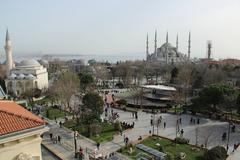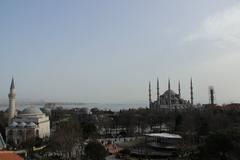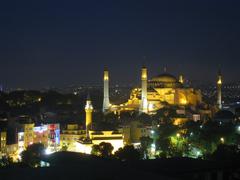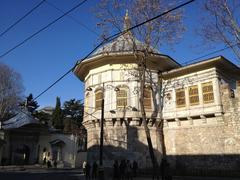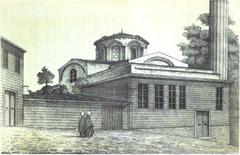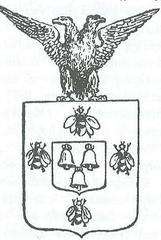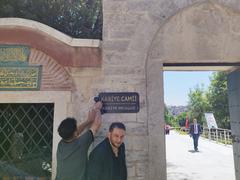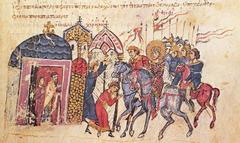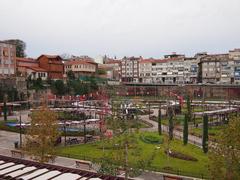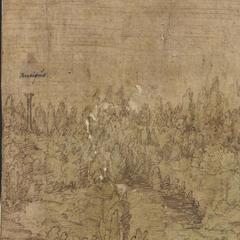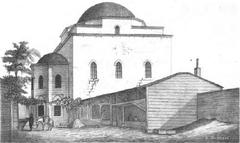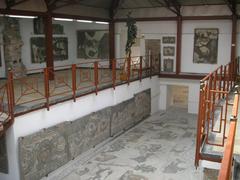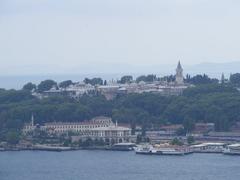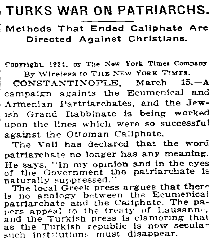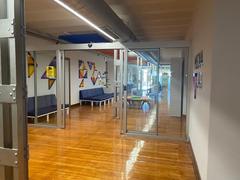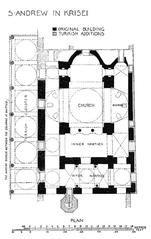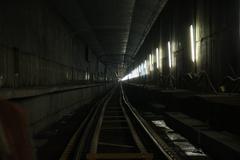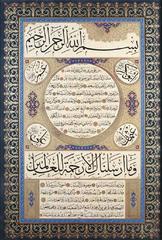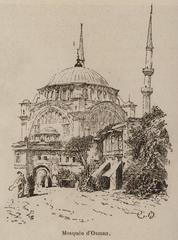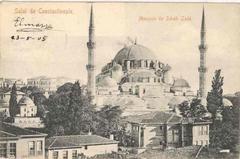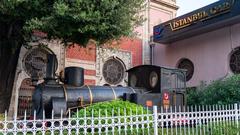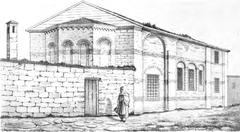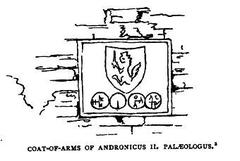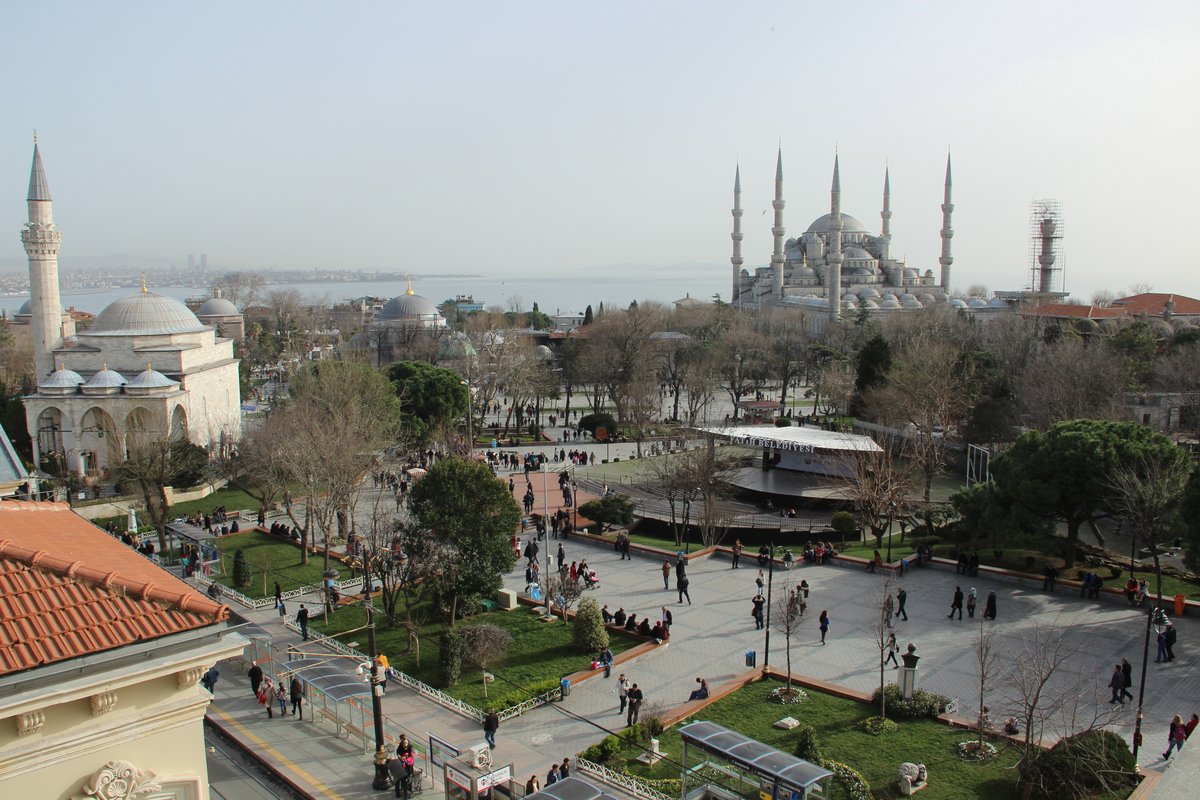
Firuz Ağa Mosque Visiting Hours, Tickets, and Historical Significance in Fatih, Turkey
Date: 14/06/2025
Introduction
Firuz Ağa Mosque, located in Istanbul’s historic Fatih district along the storied Divanyolu Street, is an enduring symbol of the Ottoman Empire’s architectural and religious legacy. Commissioned in 1490–91 CE by Firuz Ağa, the Chief Treasurer to Sultan Bayezid II, this mosque stands as a testament to the interweaving of faith, civic responsibility, and urban prominence characteristic of the era. Its proximity to the former Hippodrome (Atmeydanı) and Istanbul’s main ceremonial avenue positions it as both a spiritual sanctuary and a landmark in the heart of the city’s ever-evolving Islamic identity (tarihgezisi.com; Istanbul Metropolitan Municipality).
Visitors to Firuz Ağa Mosque are treated to a harmonious blend of serene atmosphere, refined Ottoman architecture, and rich historical context. With its distinctive central dome, intricate stonework, and celebrated calligraphic inscriptions, the mosque appeals to travelers seeking an authentic connection to Istanbul’s Ottoman heritage. This comprehensive guide details the mosque’s history, architectural highlights, visiting hours, ticket information, etiquette, accessibility, and nearby attractions, ensuring a meaningful and insightful visit (Tourstoturkey.net; visitturkey.in; Istanbul.tips).
Historical Background and Patronage
Ottoman Transformation of Istanbul
Firuz Ağa Mosque was constructed during a pivotal period following the Ottoman conquest of Constantinople in 1453. As the city was reshaped into the heart of the Ottoman Empire, monumental religious structures like Firuz Ağa Mosque helped define the new urban landscape, blending spiritual devotion with civic engagement (discover.silversea.com).
Firuz Ağa: Patron and Builder
Firuz Ağa, appointed Chief Treasurer under Sultan Bayezid II, was among the influential officials who endowed mosques as acts of piety and public service. The Arabic inscription above the mosque’s entrance, attributed to master calligrapher Şeyh Hamdullah, records the mosque’s completion in 1490–91 CE and commemorates Firuz Ağa’s commitment to serving both God and community (tarihgezisi.com).
Strategic Urban Placement
Positioned at the intersection of Atmeydanı and Divanyolu, Firuz Ağa Mosque was intentionally situated at a major crossroads, making it highly visible and accessible. This choice underscores the mosque’s role as a focal point in the district and a notable feature of the city’s ceremonial and commercial heart (tarihgezisi.com).
Broader Philanthropy and Community Role
Firuz Ağa’s legacy extended beyond the mosque itself. Historical records highlight his establishment of educational and charitable foundations, including an elementary school, a medrese, and public fountains. These institutions, supported by a system of endowments (waqf), reinforced the mosque’s function as a community hub (tarihgezisi.com).
Changes Through the Centuries
The mosque’s structures have faced numerous challenges, including damage during the Alemdar Incident in 1808 and urban encroachment. In the 19th century, the expansion of Divanyolu Avenue led to the demolition of Firuz Ağa’s türbe (tomb), though his marble sarcophagus remains by the mosque’s minaret. Restoration efforts in the 20th and 21st centuries have preserved the mosque’s integrity as a place of worship and historical monument (tarihgezisi.com).
Architectural Highlights
Layout and Exterior
Firuz Ağa Mosque exemplifies early Ottoman neighborhood mosque design, featuring a square prayer hall crowned by a central dome. The exterior is constructed of finely cut limestone, with brick used in the arches and dome. A tranquil courtyard, once enclosed by a low wall, is accessed through an elegant marble portal adorned with muqarnas carvings and inscriptions.
Dome and Minaret
The central dome, supported by Byzantine-inspired pendentives, rises above a high drum with eight windows, bathing the interior in natural light. The single, slender minaret, built from finely dressed stone and topped with a conical lead cap, is distinguished by its intricately carved balcony (şerefe), a hallmark of Ottoman aesthetics (Tourstoturkey.net).
Interior Decoration
Inside, the mosque features a mihrab of white marble with muqarnas detailing, a marble minbar with geometric and floral motifs, and interior walls adorned with gold leaf calligraphy on a blue ground. Though less lavish than later imperial mosques, the decoration is refined and harmonious, reflecting the early Ottoman style (Istanbul.tips).
Religious and Community Functions
Firuz Ağa Mosque has served as an active center of worship and community engagement for over five centuries. Historically, its complex included a medrese and facilities for charitable activities, underscoring the Ottoman tradition of integrating religious, educational, and social services. Today, it continues to host daily prayers, lectures, and special observances during Ramadan and religious festivals (visitturkey.in).
Visiting Firuz Ağa Mosque: Practical Information
Location and Access
- Address: Divanyolu Street, Fatih, Istanbul (near Sultanahmet Tram Station)
- Public Transport: Accessible via T1 tram line; short walks from Hagia Sophia, Blue Mosque, and Grand Bazaar
Visiting Hours
- Summer (April 1 – September 30): 8:30 AM to 7:00 PM daily
- Winter (October 1 – March 31): 8:30 AM to 5:00 PM daily
- Closed for approximately 90 minutes during each of the five daily prayers
- Fridays: Closed to tourists until 2:30 PM due to Jumu’ah prayer
Entrance Fee
- No ticket or entrance fee required; donations for upkeep are appreciated
Dress Code and Etiquette
- Men: Long pants, sleeves required
- Women: Long skirt or pants, long sleeves, headscarf (bring your own if possible)
- Remove shoes before entering
- Maintain silence, avoid flash photography, and respect worshippers’ privacy
Accessibility
- Wheelchair accessible via main entrance
- The mosque is on a level, paved street; public facilities nearby
Guided Tours
- No official mosque-led tours, but many local guides and historical tours include Firuz Ağa Mosque
Nearby Attractions
Firuz Ağa Mosque’s prime location enables easy access to many of Istanbul’s iconic sites:
- Hagia Sophia: 6-minute walk
- Blue Mosque: 5-minute walk
- Basilica Cistern: 4-minute walk
- Grand Bazaar: 12-minute walk
- Turkish and Islamic Arts Museum: 4-minute walk
Cultural and Social Significance
Firuz Ağa Mosque is a living monument, reflecting the Ottoman integration of religious, educational, and social services. Its enduring role in the local community—hosting daily prayers, Ramadan events, and festivals—illustrates its importance as both a spiritual and social anchor in Fatih. The mosque’s presence amid Istanbul’s diverse religious landscape speaks to the city’s multicultural heritage and ongoing interfaith dialogue (visitturkey.in).
Frequently Asked Questions (FAQ)
Q: What are Firuz Ağa Mosque’s visiting hours?
A: Open daily from 8:30 AM to 7:00 PM in summer and until 5:00 PM in winter, with closures during prayer times.
Q: Is there an entrance fee?
A: No, entry is free for all visitors.
Q: Can I take photos inside?
A: Yes, photography is allowed without flash, provided worshippers are not disturbed.
Q: Are guided tours available?
A: While the mosque does not offer regular guided tours, many local historical tours include a visit here.
Q: How do I get there?
A: The T1 tram line’s Sultanahmet Station is adjacent to the mosque.
Q: What is the dress code?
A: Modest attire is required: long pants and sleeves for men; long pants/skirt, sleeves, and a headscarf for women.
Visitor Tips
- Visit on weekday mornings or late afternoons for a quieter experience
- Bring your own headscarf if needed
- Check prayer times to avoid closures
- Respect the mosque’s spiritual ambiance and its role as an active place of worship
- Explore nearby attractions to enrich your Istanbul itinerary
Visual Content Suggestions
- Exterior: “Firuz Ağa Mosque exterior in Istanbul historical district”
- Interior: “Ottoman calligraphy and dome interior of Firuz Ağa Mosque”
- Map: “Firuz Ağa Mosque location and nearby Sultanahmet attractions”
Summary
Firuz Ağa Mosque remains a distinguished jewel within Istanbul’s historic core, encapsulating the early Ottoman spirit of architectural grace and community service. Its accessibility, central location, free entry, and continued religious function make it a rewarding destination for both spiritual reflection and cultural appreciation. Visitors are encouraged to observe etiquette and respect the mosque’s living traditions, making each visit a meaningful step into Istanbul’s rich Islamic heritage (tarihgezisi.com; Istanbul.tips; visitturkey.in; Tourstoturkey.net).
Sources
- Firuz Ağa Mosque Istanbul: History, Visiting Hours, and Tourist Guide – Tarihgezisi
- Istanbul Metropolitan Municipality
- Firuz Ağa Mosque: Guide of Istanbul’s Most Beautiful Mosques – Istanbul.tips
- Firuz Ağa Mosque Visiting Hours, Tickets & Visitor Guide – Tourstoturkey.net
- Firuz Ağa Mosque Historical and Cultural Overview – Visitturkey.in
- Mosques That Explain Istanbul – Silversea Discover
